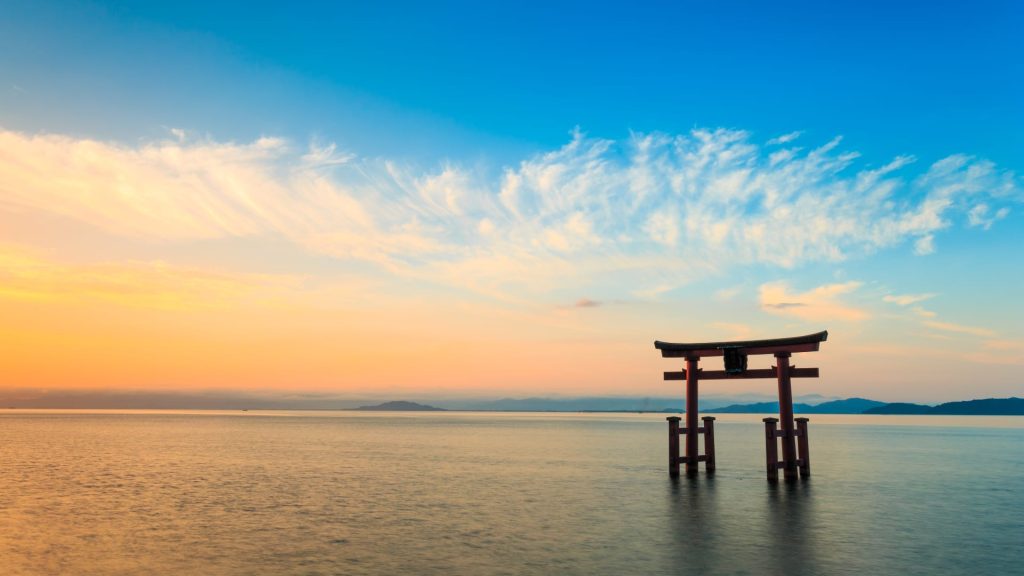
Biwa is a lake in Japan, located on the island of Honshu, the largest island of the Japanese archipelago. The lake is located in its central part, in the province of Shiga. It is shaped like a giant biwa (a pear-shaped Japanese acoustic musical instrument). It was in honour of this instrument that the lake got its name.
Biwa has an area of 670 km2 and is fed by rivers flowing from the surrounding mountains. In spring, melting snows and in autumn, typhoons can raise the water level above three meters, greatly increasing the area of \u200b\u200bthe reservoir. During the summer, the island receives little rainfall and the water level drops, thereby reducing the water surface. A very important regular replenishment of the lake, since the cities of Kyoto and Otsu drink water from it, for which a special canal was built.
There are three other cities around Biwa – Hikone, Nagahama and Sakamoto. Despite the rather high population density, developed infrastructure and popularity, which it enjoys both among the Japanese themselves and tourists, on the shores, especially in the west and north, there are still wilderness areas overgrown with virgin vegetation. In these parts of Biwa, the reed-covered marshes have the status of Wetlands of International Importance under the UNESCO Ramsar Convention. Here you can observe birds and a rich animal world, numbering about 1100 species.
The protected status of the lake surprisingly coexists and harmonizes with civilization: fireworks are arranged here, and the Belle Louisville paddle steamer, as well as other sightseeing boats and ferries, sail along the lake. Hiking trails are laid along the nearby Hira-San mountains, and boat and bicycle rentals operate.
Interesting Facts
Honshu used to be called Nippon, from this name came to the name of the country – “Japan”.
The banks of Biwa are abundantly irrigated with the blood of samurai who laid down their lives in more than one bloody battle: after the victory, the prisoners were beheaded, and the losers committed mass seppuku.
Biwa is a great source of freshwater pearls.
